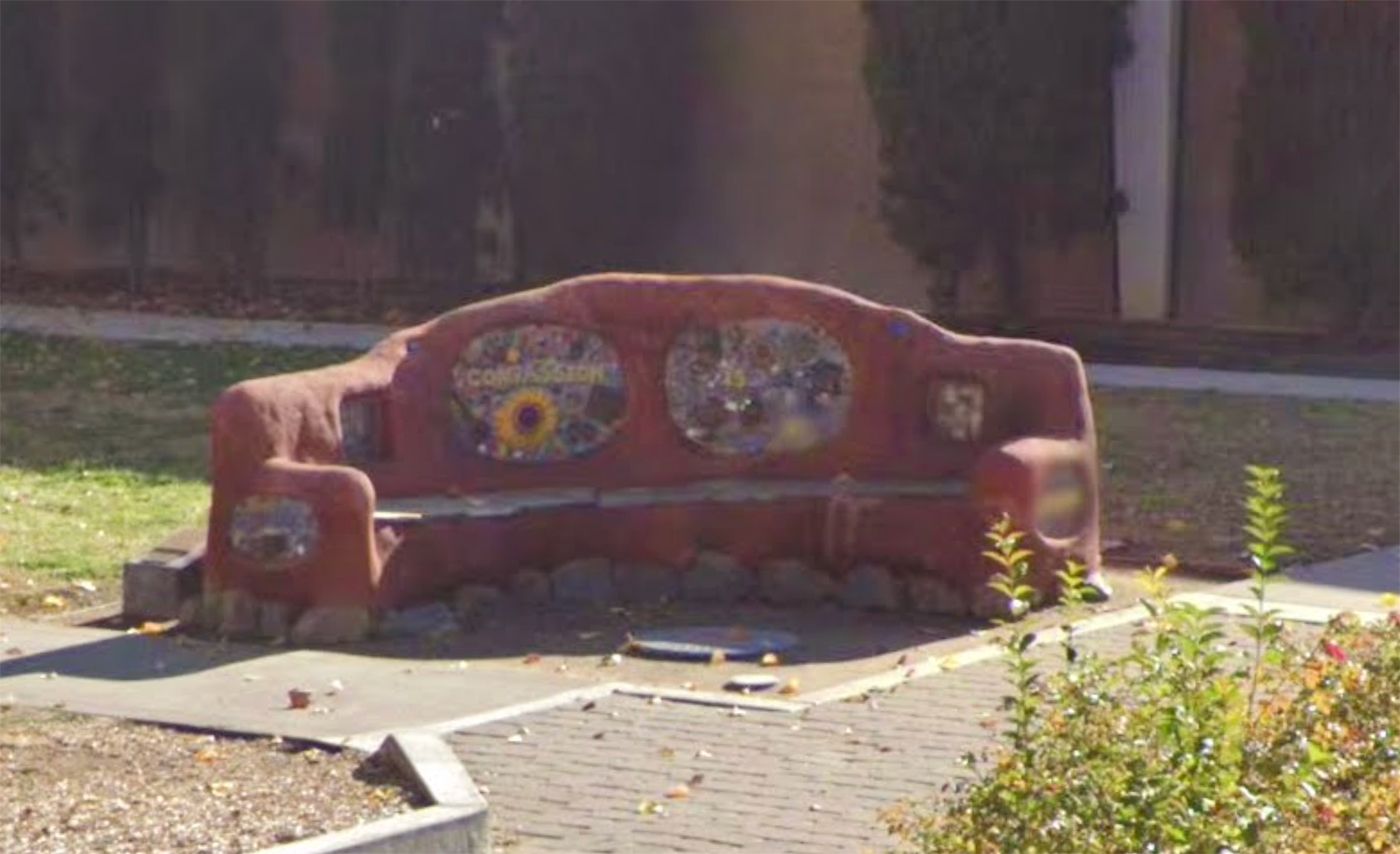It was interesting that, in the days following his death at the hands of an apparent serial killer in the quiet college town of Davis, residents were reluctant to refer to David Breaux as "homeless." Now, a posthumous profile tries to explain.
Breaux was stabbed in Davis' Central Park in late April, and we soon learned that he was known as a beloved community figure, dubbed "the Compassion Guy," because of a topic of conversation and philosophy that he obsessively engaged passersby with for over a decade. "Would you care to share your definition of compassion?" he would ask, and he collected people's responses in a notebook, ultimately self-publishing them in a book several years ago.
Where he typically posted up, on a main thoroughfare across from Central Park, became known as Compassion Corner as a result, and the city would install a sculptured bench — a piece of public art — in his honor.
Since his arrival in town in 2009, Breaux was mostly unhoused, but as the New York Times explains, most who knew him didn't like to say that he was homeless. He was, instead, a shaman-like figure who disavowed material possessions, and was living a purer and simpler life than most.
A video Breaux made about his own compassionate mission in 2016.
“Did he sleep in the park? Absolutely. Did he go to shelters? 100 percent. But everything David did was conscious and by choice and a lot of it had to do with that he didn’t want anything from anyone,” says Becky Marigo, a case manager at Davis Community Meals and Housing who had been working for years with Breaux, speaking to the Times.
A graduate of Stanford, Breaux likely could have a pursued any number of careers, but family and friends say that he consistently made less ambitious choices. He majored in urban studies with a focus on community development, dabbled in screenwriting and loved film, worked as a camp counselor and as a substitute teacher in Southern California.
He ended up in Oakland, apparently playing a lot of poker and video games, before a breakup with a girlfriend seems to have broken him — or at least push him into a period of intense self-reflection. He says in the video above that he first walked around Lake Merritt, near where he had a studio apartment, trying to come up with a "collective definition" of compassion. He later followed a friend to Davis, and would soon be sitting at the corner of Third and C streets asking people to define compassion.
Per the Times, he was inspired by the British author and religion scholar Karen Armstrong, and he wanted to devote his life to encouraging peace and selflessness by example. Marigo says that he sought shelter in 2010 in order to find some space in which to work on the book that he would eventually publish the next year. Also in 2010, some UC Davis students made a documentary about him. He was asked to help advise when the community was roiled by that infamous pepper-spray incident during the Occupy protests in 2011.
The student documentary "Standing Compassion," from 2010.
By 2013, the bench would be created in his honor, and his place in the proverbial town square was solidified.

While Breaux's friends and college classmates were baffled by his choice to live on the street, some understood — and, just months before his death, Breaux had been showing signs of wanting a new chapter, inquiring about job possibilities and housing.
Breaux's suspected killer, 21-year-old Carlos Dominguez, had just been kicked out of UC Davis for academic reasons days before the killings began. Shortly after stabbing Breaux, authorities believe he went on to stab fellow student Karim Abou Najm, and homeless woman Kimberlee Guillory, the latter of whom survived. He is currently undergoing a psychiatric evaluation to determine his competency to stand trial.
Previously: Davis Stabbing Suspect Grew Up In Oakland, Was Pre-Med Student

